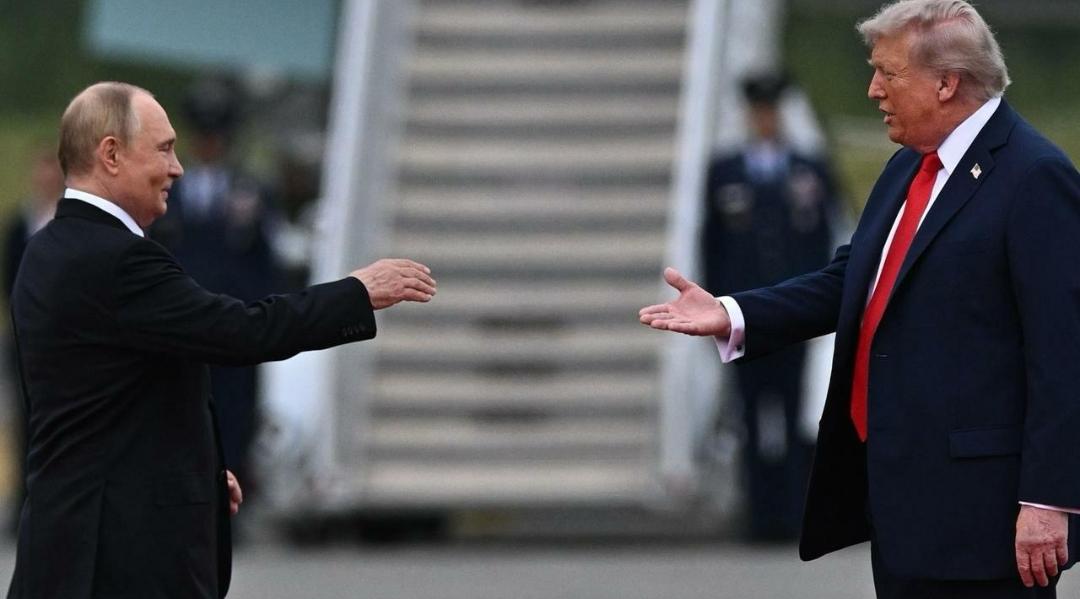
On August 15, 2025, U.S. President Donald Trump and Russian President Vladimir Putin held a historic summit at Joint Base Elmendorf-Richardson in Anchorage, Alaska. The meeting, designed to push forward a ceasefire in the ongoing Russia-Ukraine war, ended without a deal but carried immense symbolic weight and global attention.
This was the first time a Russian leader visited Alaska and Putin’s first trip to the United States in a decade. It was also Trump and Putin’s first face-to-face encounter since 2019. Trump positioned the summit as a step toward fulfilling his 2024 campaign promise to end the war in Ukraine, which began with Russia’s full-scale invasion in February 2022.
The format started with a private one-on-one session between Trump and Putin, joined only by translators, before moving to a broader meeting that lasted around three hours. The U.S. delegation included Secretary of State Marco Rubio, Special Envoy Steve Witkoff, Treasury Secretary Scott Bessent, and Commerce Secretary Howard Lutnick.
On the Russian side, attendees included Foreign Minister Sergey Lavrov, Defense Minister Andrei Belousov, Finance Minister Anton Siluanov, Presidential Aide Yuri Ushakov, and envoy Kirill Dmitriev. Ukrainian President Volodymyr Zelenskyy was notably not invited, raising concerns in Kyiv and among European allies that decisions might be made without Ukraine’s participation.
The central topic was a potential ceasefire in Ukraine. Trump stressed that halting the violence was his top priority but avoided entering into discussions on territorial settlements. He clarified that any decisions on land would be left to Ukraine. Russia, which currently controls nearly 20 percent of Ukrainian territory including Crimea and large parts of Donbas, reiterated its demands:
Ukraine must abandon NATO aspirations, cede territory, disarm significantly, and push for the easing of Western sanctions. Putin also proposed broadening the talks to include economic cooperation, digital technology, Arctic exploration, and arms control. Trump responded that economic discussions would come later, after peace was achieved.
The summit ended without a breakthrough. A brief joint press conference lasted just 12 minutes, with Putin vaguely hinting at “agreements” while Trump said progress was made on “many points” but emphasized that obstacles remained. He promised to brief Zelenskyy and NATO leaders and suggested a possible follow-up summit that could include Ukraine. Despite the lack of results, Trump insisted there was still “a very good chance” of moving forward.
Alaska’s history and symbolism played a major role in the summit’s staging. Once Russian territory, Alaska was sold to the United States in 1867 for $7.2 million, a decision that shaped the region’s legacy as both a strategic asset and reminder of U.S. negotiating strength. Hosting the talks at a Cold War-era base underscored U.S. military power.
Trump gave Putin a red-carpet welcome, personally greeting him on the tarmac and sharing a limousine ride. Local leaders highlighted Alaska’s importance: Senator Dan Sullivan stressed its role in U.S. defense and energy, while Governor Mike Dunleavy dismissed rumors that Trump might offer resources to Russia as “fake news.”
Public reaction in the United States was mixed. A Pew Research poll conducted earlier in August showed 59 percent of Americans had little confidence in Trump’s handling of Russia, while 33 percent felt he leaned too far in favor of Moscow.
Only 28 percent believed his approach was balanced. In Ukraine, Zelenskyy warned that decisions made without his country were “meaningless.” European leaders, including Germany’s Friedrich Merz, France’s Emmanuel Macron, and the UK’s Keir Starmer, insisted that no territorial agreements could be struck without Kyiv’s consent and pushed for stronger security guarantees for Ukraine.
Analysts were skeptical as well. Experts suggested Putin’s comments showed no change in Russia’s stance and described the summit as part of his effort to weaken U.S. support for Ukraine while portraying Ukraine as the aggressor. Meanwhile, Russian forces continued advancing in Donetsk, strengthening Moscow’s leverage.
Trump’s approach to Putin was notably warm, highlighting what he called a “fantastic relationship.” This contrasted with earlier threats of consequences should Russia resist a ceasefire. His rapport with Zelenskyy has been strained for months, adding further controversy to his decision not to include Ukraine in Alaska.
For Putin, the meeting provided an opportunity to normalize relations with Washington, float ideas of economic cooperation, and press for recognition of Russian demands in Ukraine. Kremlin officials downplayed expectations ahead of the talks, noting there would be no signed agreements.
The atmosphere in Anchorage was high-profile, with Trump supporters rallying nearby as cameras captured dramatic visuals of the two leaders against the Alaskan mountains and U.S. fighter jets. Yet the substance fell short: no ceasefire was reached, no timeline was given, and the war continued to escalate with fresh Russian drone strikes killing civilians in Ukraine just hours before the summit.
While Trump framed the meeting as an important first step, critics argue that the friendly optics gave Putin legitimacy without securing concrete progress. The summit highlighted both the urgency and the difficulty of negotiating peace, leaving the world waiting for what comes next.
Disclaimer:This article is based on publicly available reports and official statements. It is intended for informational purposes only and does not represent personal opinions or endorsements.




